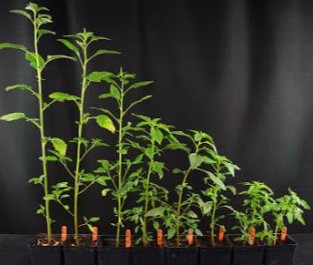By Debalin Sarangi
Herbicide resistant weeds are widespread in MN and several reports on weed control failure following herbicide applications were reported recently. Therefore, testing weed populations for herbicide resistance is important to plan the future weed management practices more efficiently.
The University of Minnesota Extension has started an initiative to screen the weed populations collected from agronomic crop fields for herbicide resistance. We are requesting the stakeholders from MN to submit the seed samples for weeds that survived the pre emergence and/or post emergence herbicide treatments. We are targeting the common weed species including, but not limited to, pigweeds (waterhemp and redroot pigweed, etc.), giant ragweed, common ragweed, common lambsquarters, marestail (or horseweed), kochia, foxtails, and barnyardgrass.
The resistance screening is FREE! Follow the steps below to submit the samples:
Step 1: Locate weed escapes
The samples can be collected from a field with a history of having herbicide resistant weeds, or from a random field where the weed escapes are present. Check the seedheads for the presence of mature seeds. Depending on the weed species, seeds may occur on the seedhead at top, or on the branches, or at the leaf axils. Male plants don’t produce seeds.
Step 2: Collect seeds

Clip the seedheads of a weed from 5 or more plants per field and put them in paper bags. DON’T USE plastic bags, as they promote mold growth.
Seal the paper bags carefully and ship them to the address below or you can bring the samples to the local crops Extension educators, if there is one present in your county.

For each sample, please include the following information:
- Submitter name and contact email
- GPS coordinate of the collection site or township and Zip code, if GPS coordinates are not available.
- Crop name
- Weed name
- Names of the herbicides applied this season (if available)
- Field history (if available). Information may include crop rotation, crop traits, and herbicide treatments, etc. for the past years
Step 3: Screening for herbicide resistance
The UMN Weed Science team will grow the weed seeds in the greenhouse at St. Paul campus and screen them for possible herbicide resistance. The dose response bioassays will be conducted on selective populations (below left). Some of the samples will also be tested in laboratory using molecular techniques (below right).


Step 4: Possible outcomes
- Results are usually available within 6 months after submission; sometimes it may take longer, depending on the weed species and the number of samples received.
- Herbicide-resistant weeds in MN will be documented and distribution maps for the common weeds will be created.
- Weed management recommendations will be provided.
- Future surveys will focus on the weed species shift and the evolution of multiple herbicide resistance.
Source : umn.edu